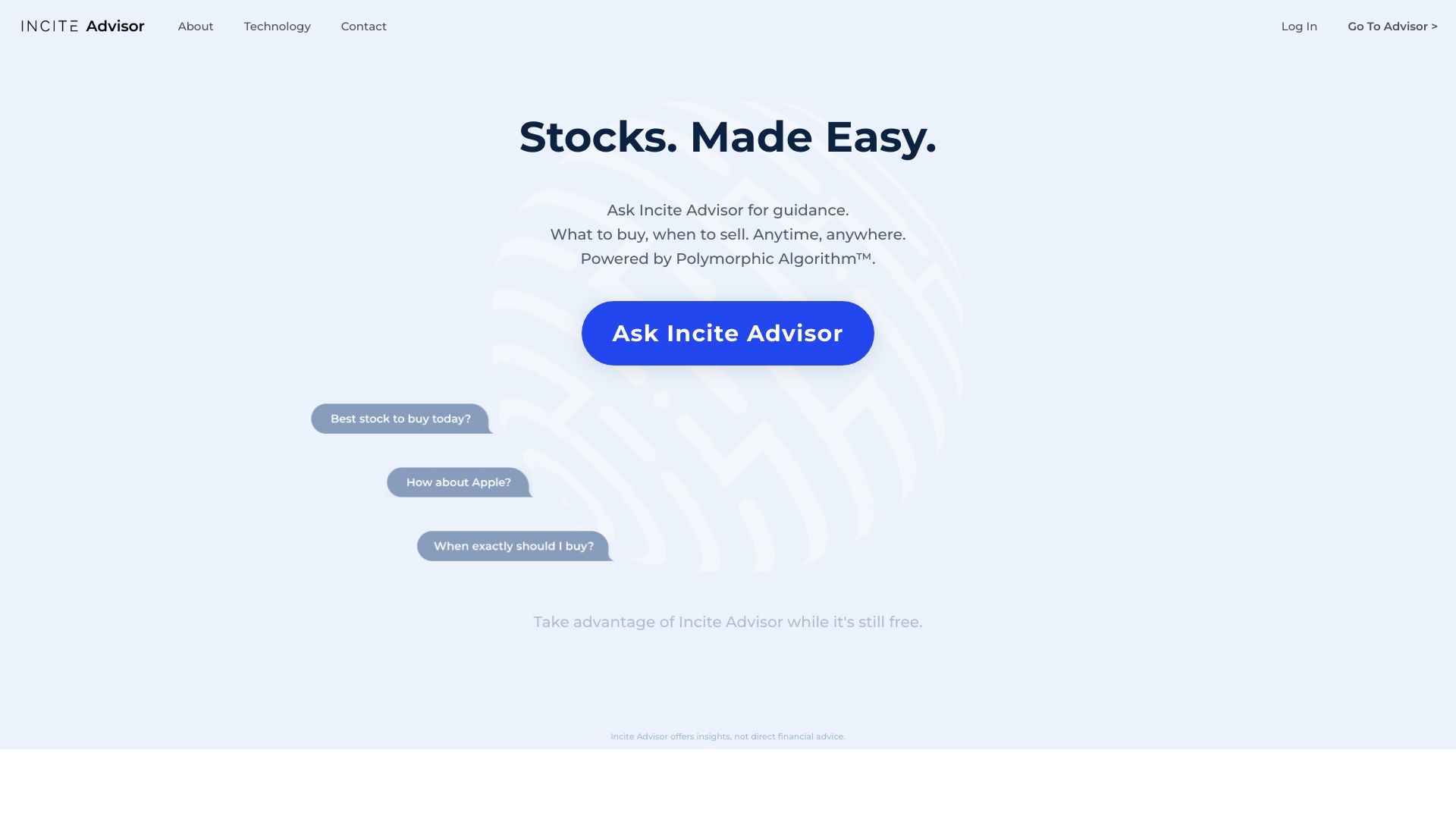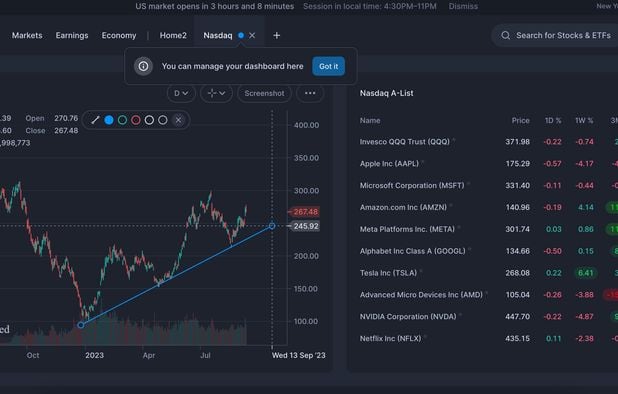When you are evaluating AI trading platforms that predict/analyze markets, market coverage is a key aspect to think about. It determines what types of assets and markets are readily available. If you choose a platform with comprehensive coverage, you can diversify your portfolio and take advantage of opportunities across the globe. It is also possible to adjust to various trading strategies. Here are the top ten tips for assessing the market coverage offered by these platforms:
1. Evaluate Supported Asset Classes
Stocks - Make sure the platform you choose to use can provide coverage of major markets for stocks (e.g. NYSE NASDAQ LSE HKEX), and also includes mid-caps, small-caps and large-caps.
ETFs: Make sure that the platform provides an array of ETFs to offer diversified exposure across different sectors, themes and countries.
Options and Futures: Determine whether the platform allows derivatives, such as options, futures and other leveraged products.
The commodities and forex market: Check whether the platform offers forex pairs and precious metals, energy commodities, and agricultural products.
Cryptocurrencies: Make sure the platform supports major cryptocurrencies (e.g., Bitcoin, Ethereum) and altcoins.
2. Check Coverage Area
Global markets: Make sure that the platform includes major global markets like North America, Europe and Asia-Pacific.
Regional focus Verify that the platform has a focus on specific regions or markets that align with your trading interest.
Local exchanges: Check if the platform supports local or regional exchanges relevant to your area or your strategy.
3. Delayed Data Vs. Delayed Data
Real-time data - Ensure that the platform provides real-time market information that will assist you in making timely decisions, especially for active traders.
Delayed data: Discover whether you are able to get delayed data for free, or at a reduced cost. This might be enough for investors who are looking to invest long-term.
Data latency: Determine whether the platform reduces latency for real-time data feeds especially for high-frequency trading.
4. Examine the historical data availability
The depth of the historical data Make sure the platform provides extensive historical data (e.g., 10+ years) to backtest and analyze.
Look for levels of granularity. Historical data may include daily, intraday and weekly the granularity.
Corporate actions: Make sure that the data from the past takes into consideration stock splits (if applicable), dividends and other corporate actions.
5. Check the Market Depth and Place an Order Books
For better price discovery, ensure that the platform has Level 2 information.
Verify that your platform displays real-time price spreads.
Volume data: Make sure the platform has detailed data on volume to analyze market and liquidity activities.
6. Examine the coverage of Indices Sectors
Major indices - Ensure your platform supports major indices, like the S&P 500 (e.g. NASDAQ 100 or FTSE 100), for index-based benchmarking.
Sector-specific data to provide targeted analysis, look into whether the platform provides information on a specific industry (e.g. technology, healthcare, or energy).
Custom indices. Make sure that the platform is able to track or create customized indices that meet your needs.
7. Test the integration of News and Sentiment Data
News feeds - Ensure your platform is equipped with the most up-to-date market-moving news feeds (e.g. Bloomberg, Reuters).
Sentiment analysis Check to determine if your platform has sentiment analysis tools that use information from social media, news sources, or any other data source.
Event-driven trades: Verify the platform's capabilities to support event-driven trades (e.g. announcements on economic data, earnings announcements).
8. Check for Multimarket Trading Abilities
Cross-market Trading: Verify that the platform you are using allows traders to trade across a variety of market segments and asset classes using an unifying interface.
Conversion of currencies: Find out if the platform supports multi-currency as well as automated conversion of currencies for international trading.
Check for support of time zones.
9. Examine the coverage of alternative data Sources
Alternative data: For unique insights, verify that your platform utilizes alternative data (e.g. satellite imagery web traffic, satellite imagery, or credit card transactions).
ESG data: Determine if the platform includes environmental, social, and governance (ESG) information for socially responsible investing.
Macroeconomic data: Ensure the platform provides macroeconomic indicators (e.g., inflation, GDP, interest rates) for fundamental analysis.
Review reviews and feedback from customers as well as the reputation of the market
User feedback: Use reviews from users to assess the platform's reliability and market coverage.
Check the reputation of the platform, in terms of its coverage or industry awards.
Case studies and testimonials They will showcase the performance of the platform in particular asset classes or markets.
Bonus Tips
Trial period: Use an unpaid trial or demo to evaluate the platform's market coverage as well as data quality.
API access - Check if the API can be used to access data on the market programmatically.
Support for customers. Make sure that the platform will provide assistance with regard to market or data queries.
By using these tips, it is possible to be able to accurately evaluate the coverage of AI stock prediction/analyzing trading platform. You can then choose the trading platform that gives you the markets and the data you require for successful trades. Comprehensive market coverage lets you to diversify and explore the possibilities of your portfolio. It also helps you adapt to market changes. Take a look at the top ai trading for site advice including ai investment app, trading ai, ai for trading, best AI stock trading bot free, ai investing app, ai trading, trading with ai, best ai trading software, market ai, best ai trading app and more.

Top 10 Tips For Assessing The Quality And Reliability Of Ai-Based Stock Trading Platforms
To make sure that AI-driven prediction platforms and trading platforms can handle the increasing quantity of user input, data and market complexity, it is essential to evaluate their scalability. Here are 10 top tips to determine the scalability.
1. Evaluate Data Handling Capacity
Tip: Make sure the platform you are considering is able to handle and analyze large datasets.
Why: Scalable systems must handle data volumes that are increasing without affecting performance.
2. Test the Real-Time Processing Capabilities of your processor
Try the platform out to see how it handles streams of data in real-time for example, breaking news or live price updates.
The reason: The importance of real-time analysis is for trading decisions, and delay can result in missed opportunities.
3. Cloud Infrastructure and Elasticity Cloud Infrastructure and Elasticity: Take a look
TIP: Make sure your platform is cloud-based (e.g. AWS, Google Cloud or Azure) and able to dynamically scale resources.
Cloud platforms provide for elasticity. The system can be scaled up or reverse according to the demand.
4. Assess Algorithm Efficiency
Tip : Check the computational efficacy and the accuracy of AI models to make predictions.
Reason: Complex algorithms can be resource intensive Therefore, optimizing these algorithms is vital for scalability.
5. Examine parallel processing and distributed computing
TIP: Find out if the platform uses distributed computing or parallel processing frameworks (e.g., Apache Spark, Hadoop).
The reason: These advanced technologies allow for faster analysis of data and processing on multiple nodes.
Review API Integration and Interoperability
TIP: Examine the integration of the platform to external APIs.
What's the reason? Seamless integration enables the platform to be adapted to changing trading environments and data sources.
7. Analyze User Load Handling
To check the performance of your system, simulate high-volume traffic.
The reason is that a platform that is scalable must be able to sustain its performance as the number of users increase.
8. Examine the Model Retraining Adaptability
Tip: Assess how frequently and efficiently the AI models are being retrained using new data.
The reason is that markets change constantly and evolving, it's important to ensure that models are up-to-date.
9. Verify Fault Tolerance and Redundancy
Tip. Make sure your platform is equipped with failover systems and redundancy in case of hardware or software failures.
Why: Downtime can be expensive for traders, and fault tolerance is vital to allow for scaling.
10. Monitor Cost Efficiency
Analyze costs associated with increasing the capacity of the platform. This includes cloud resources, data storage, as in addition to computational power.
Why: The price of scalability shouldn't be unsustainable. So, it's crucial to find a balance between performance and expense.
Bonus tip: Future-proofing
Be sure that the platform is able to adapt to changes in regulations and incorporates new technologies, such as quantum computing or advanced NLP.
Concentrating on these aspects will allow you to assess the capacity of AI stock prediction and trading platform and make sure they are durable effective, efficient and ready for future expansion. Have a look at the best their explanation about best AI stocks to buy now for more info including ai copyright signals, best ai penny stocks, stock trading ai, AI stock analysis, how to use ai for stock trading, best stock prediction website, free AI stock picker, chart analysis ai, AI stock investing, AI stock investing and more.
